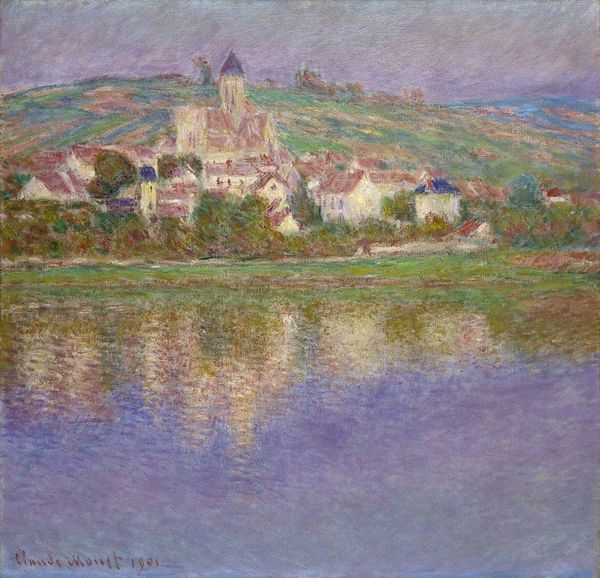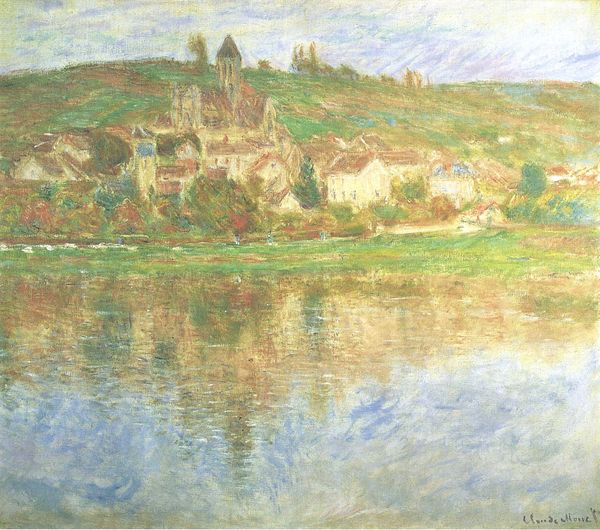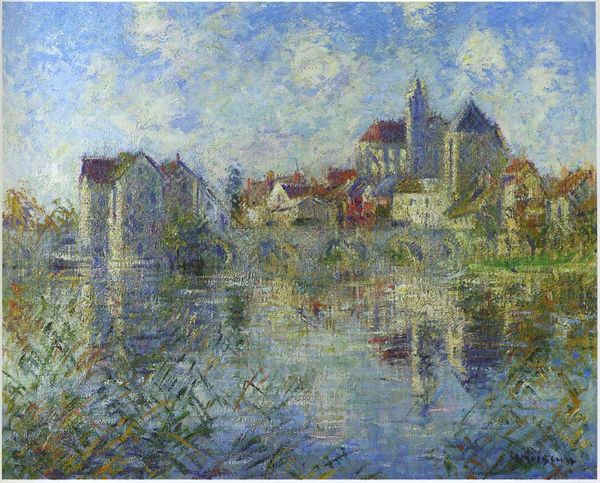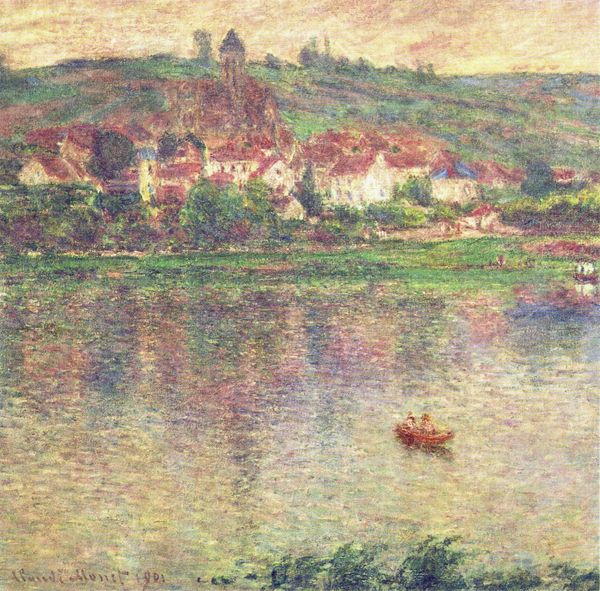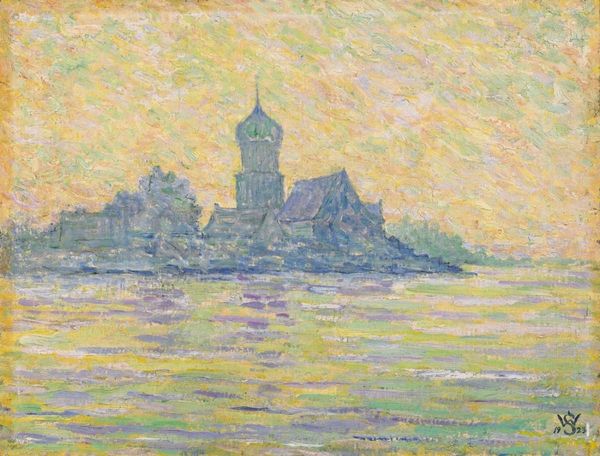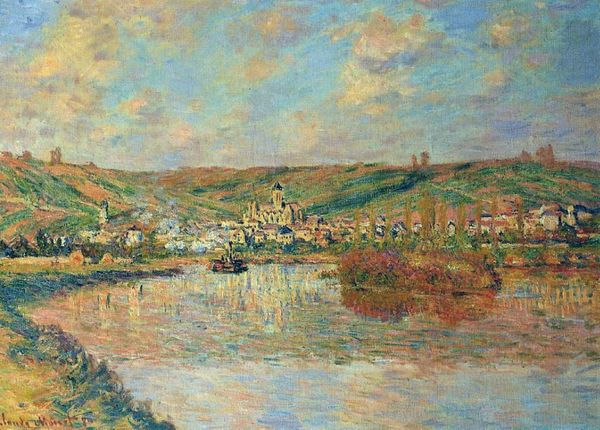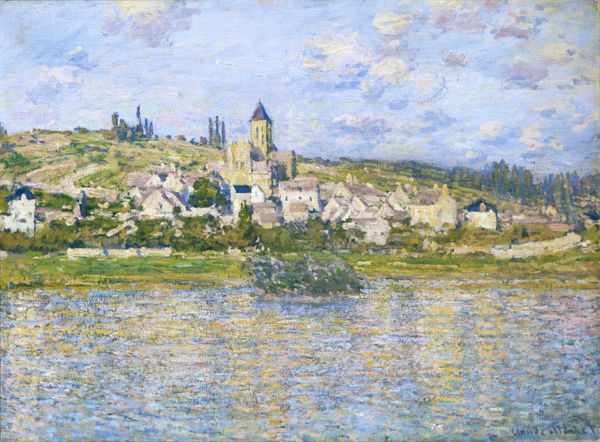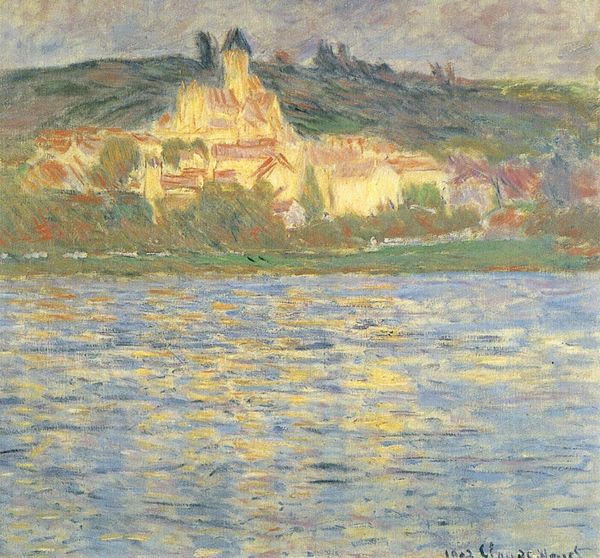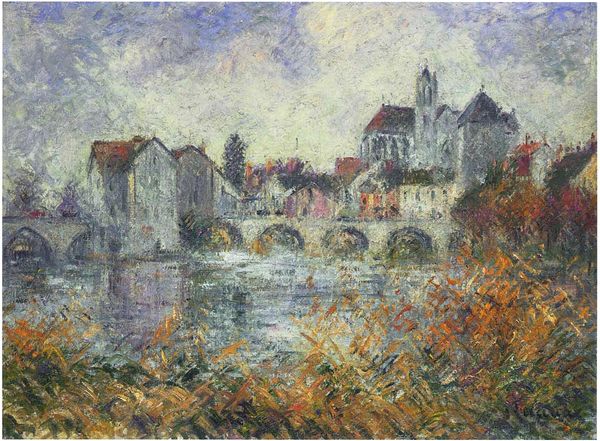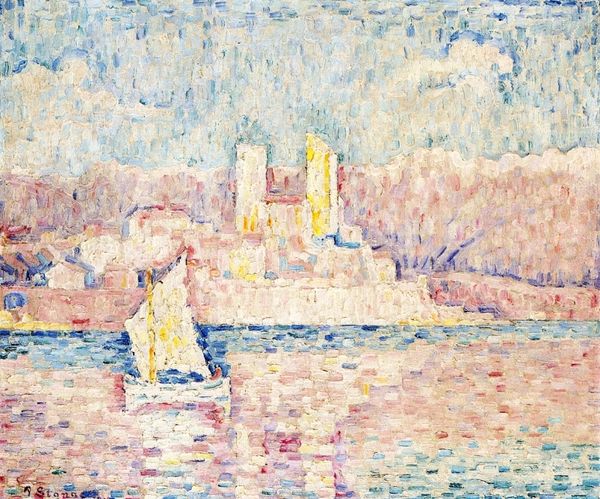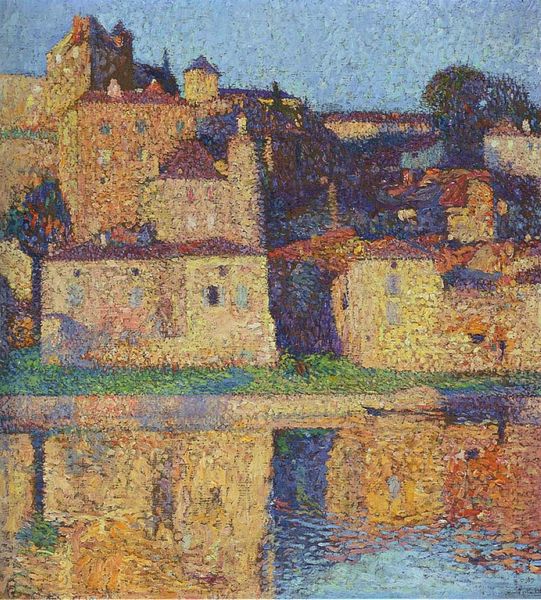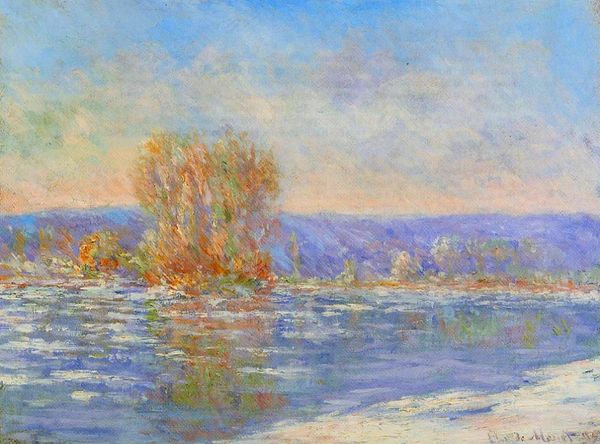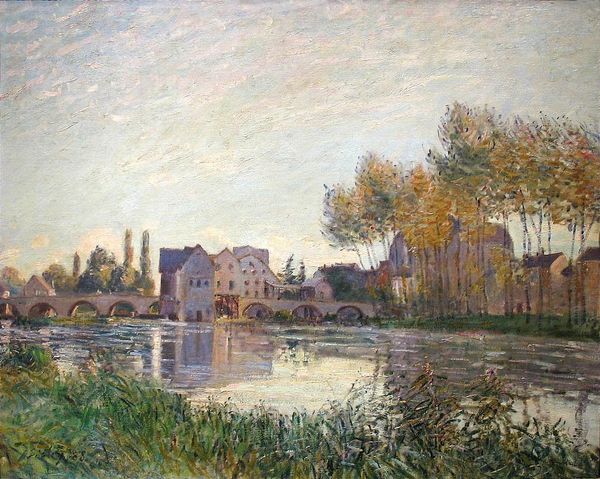
Copyright: Public domain
Curator: The overall effect is quite dreamlike, isn't it? A hazy silhouette mirrored in calm water... Editor: Indeed. We're looking at Claude Monet's "Vetheuil at Sunset," created in 1901. He renders the town with oil paint using the plein-air method to explore the fleeting effects of light. Curator: Considering his focus on capturing light, the thickness of the paint is somewhat surprising. It's as if he's building the image with deliberate strokes of pure pigment. Did the patrons of his art ever push back on the production? Editor: The reception was mixed. By 1901, Impressionism was more accepted, but Monet still faced critics who questioned the perceived lack of finish. We have to consider how deeply entrenched academic standards were within the French art system at the time. The Salon system was waning, yes, but influential. And Monet largely skirted it for his own economic production of his paintings. Curator: It’s fascinating how his serial method speaks to the burgeoning industrial age - painting something over and over like the repetition of industrial work, yet celebrating the handmade nature of paint. Did he take many commissions? Editor: Generally, no. Monet achieved independence by carefully cultivating relationships with dealers and collectors. He actively worked to shape the market for his paintings, understanding how scarcity and presentation impacted prices and his legacy. We must understand that Impressionism was at odds with the social institutions that could support art for social change. Curator: This feels very evident here, particularly because, while depicting the built environment, the architecture appears almost incidental, softened and subsumed into the atmosphere. He seems far more interested in the atmosphere than in the buildings, a world consumed by nature's elements rather than humanity's presence. Editor: I agree. Monet’s artistic legacy exists now with institutional validation due to his keen recognition that his practice would supersede past art-making traditions, placing paintings into public consciousness today and onward. Curator: That focus on the fleeting quality of the here and now feels vital and true still. Editor: Absolutely, a cornerstone for where art resides now.
Comments
No comments
Be the first to comment and join the conversation on the ultimate creative platform.
